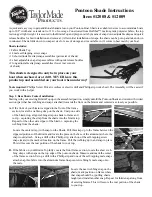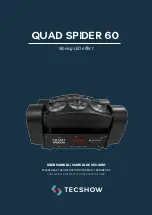
EEG and auditory evoked potentials
AEP practicalities
AEP measurement description
Evoked potentials (EP) are responses of the central nervous system to external
stimulation. Common evoked potentials are the auditory evoked potentials (AEP),
somatosensory evoked potentials (SSEP), and visual evoked potentials (VEP).
Evoked potentials are measured by stimulation and estimating the response. The
evoked potentials are largely affected by the same things as the EEG. Integrity of
neural pathways brings the information to the cortex. Examples of deficits in the
pathways are slower, smaller responses (lower amplitudes, longer latencies).
Auditory evoked potentials (AEP) are transient responses to an auditory stimulus,
which is usually given through headphones. AEPs reflect the function of the auditory
pathway. To create a distinguishable response, a large amount of responses are
averaged and the results are displayed as a waveform.
During AEP monitoring, the AEP electrodes are also used for EEG monitoring. The AEP
measurement can be started manually, repeated automatically after set intervals, or
the measurement can be continuous with moving averaging.
Main peak categories (AEP)
Latencies and amplitudes of particular peaks are important information. Latency is
the time to the peak, and amplitude is the height of the peak. Typically in anesthesia,
for example, cortical latencies grow longer as anesthesia starts to take effect in the
brain. Three main groups of peaks can be distinguished, and they can be correlated to
anatomical structures.
●
Brainstem AEP (BAEP)
■
with latencies shorter than 10 ms
■
cochlea, acoustic nerve, brainstem
●
Middle latency AEP (MLAEP)
■
with latencies from 10 ms to 100 ms
■
primary auditory cortex (temporal lobe)
●
Long latency AEP (LLAEP)
■
with latencies from 100 ms to 1000 ms
■
frontal cortex
NOTE
LLAEP display is not supported in the monitor.
Examples of typical AEP patterns
AEP 1 ms to 1000 ms with anatomical sites and labeling:
2062971-001
CARESCAPE Modular Monitors
391
Summary of Contents for CARESCAPE
Page 38: ...38 CARESCAPE Modular Monitors 2062971 001 ...
Page 114: ...Setting up the monitor before use 114 CARESCAPE Modular Monitors 2062971 001 ...
Page 146: ...Alarms 146 CARESCAPE Modular Monitors 2062971 001 ...
Page 218: ...Pulse oximetry 218 CARESCAPE Modular Monitors 2062971 001 ...
Page 234: ...Non invasive blood pressure 234 CARESCAPE Modular Monitors 2062971 001 ...
Page 260: ...Temperature 260 CARESCAPE Modular Monitors 2062971 001 ...
Page 274: ...Cardiac output 274 CARESCAPE Modular Monitors 2062971 001 ...
Page 280: ...Mixed venous oxygen saturation SvO 280 CARESCAPE Modular Monitors 2062971 001 ...
Page 338: ...Patient Spirometry 338 CARESCAPE Modular Monitors 2062971 001 ...
Page 372: ...Neuromuscular transmission 372 CARESCAPE Modular Monitors 2062971 001 ...
Page 404: ...Laboratory data 404 CARESCAPE Modular Monitors 2062971 001 ...
Page 410: ...Calculations 410 CARESCAPE Modular Monitors 2062971 001 ...
Page 416: ...Drug calculations 416 CARESCAPE Modular Monitors 2062971 001 ...
Page 424: ...Trends 424 CARESCAPE Modular Monitors 2062971 001 ...
Page 432: ...Snapshots and events 432 CARESCAPE Modular Monitors 2062971 001 ...
Page 462: ...Cleaning and care 462 CARESCAPE Modular Monitors 2062971 001 ...
Page 528: ...Abbreviations yr year yrs years 528 CARESCAPE Modular Monitors 2062971 001 ...
Page 546: ...Skills checklist 546 CARESCAPE Modular Monitors 2062971 001 ...
Page 547: ...content ...
















































